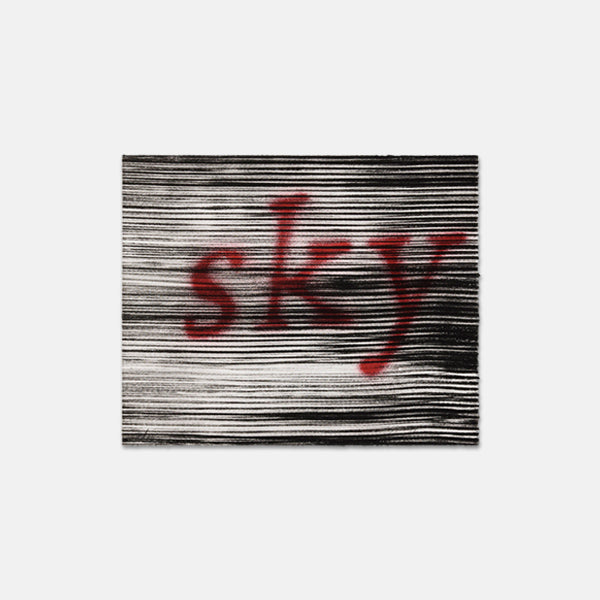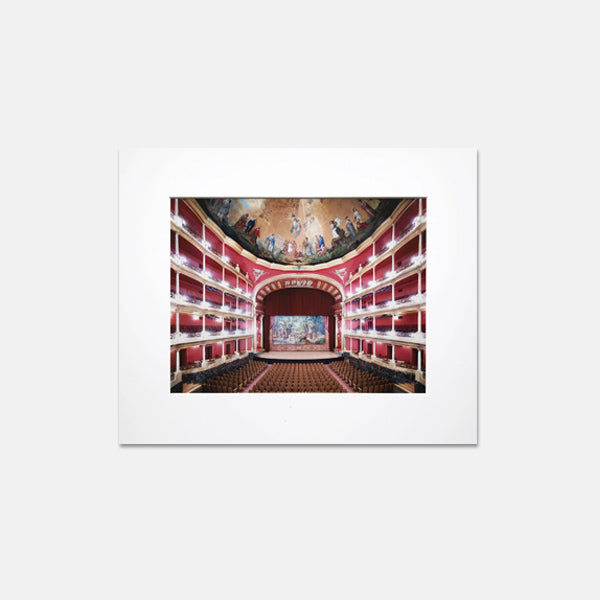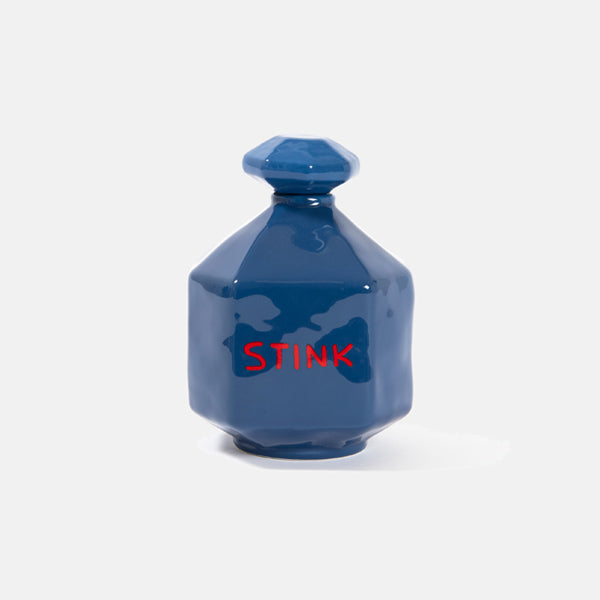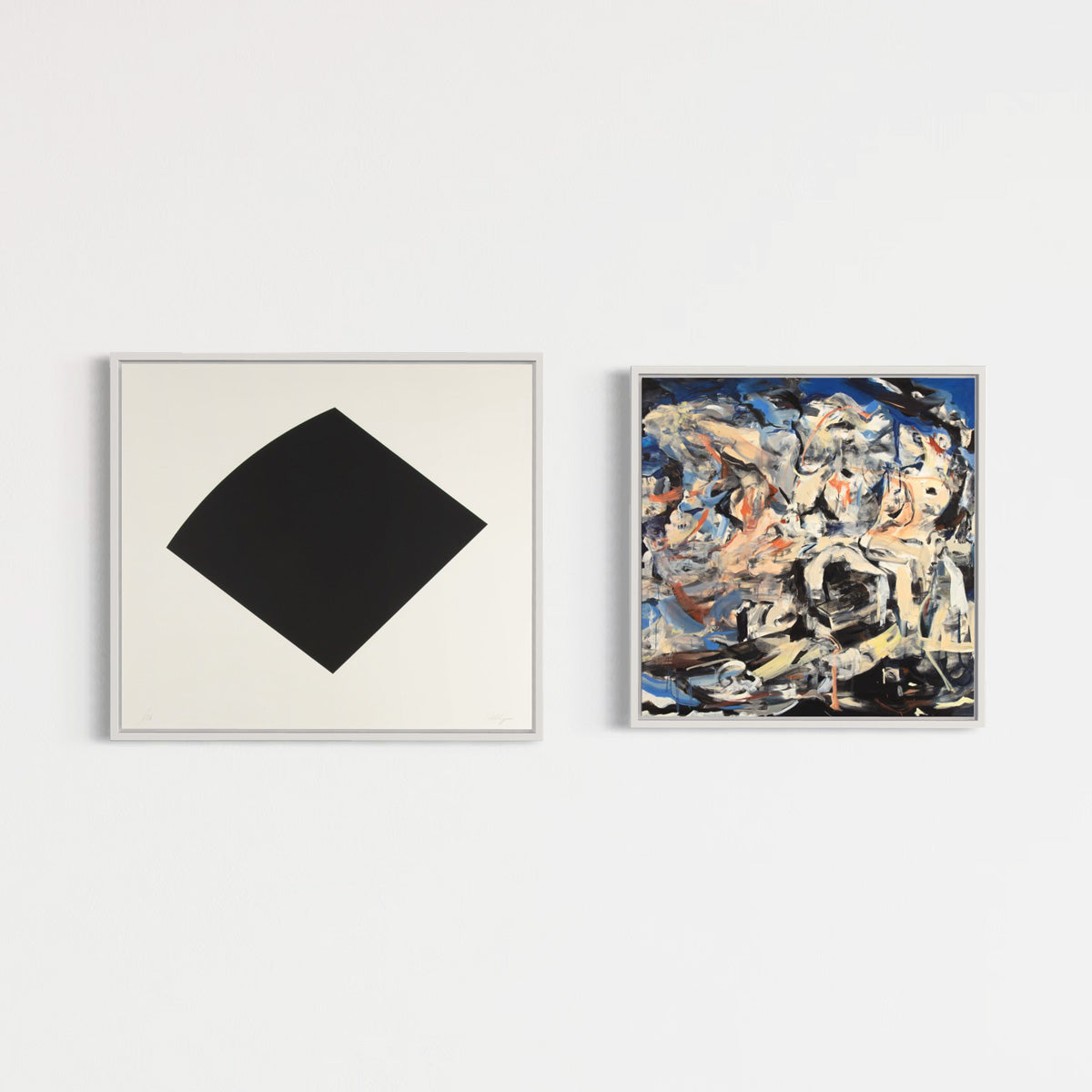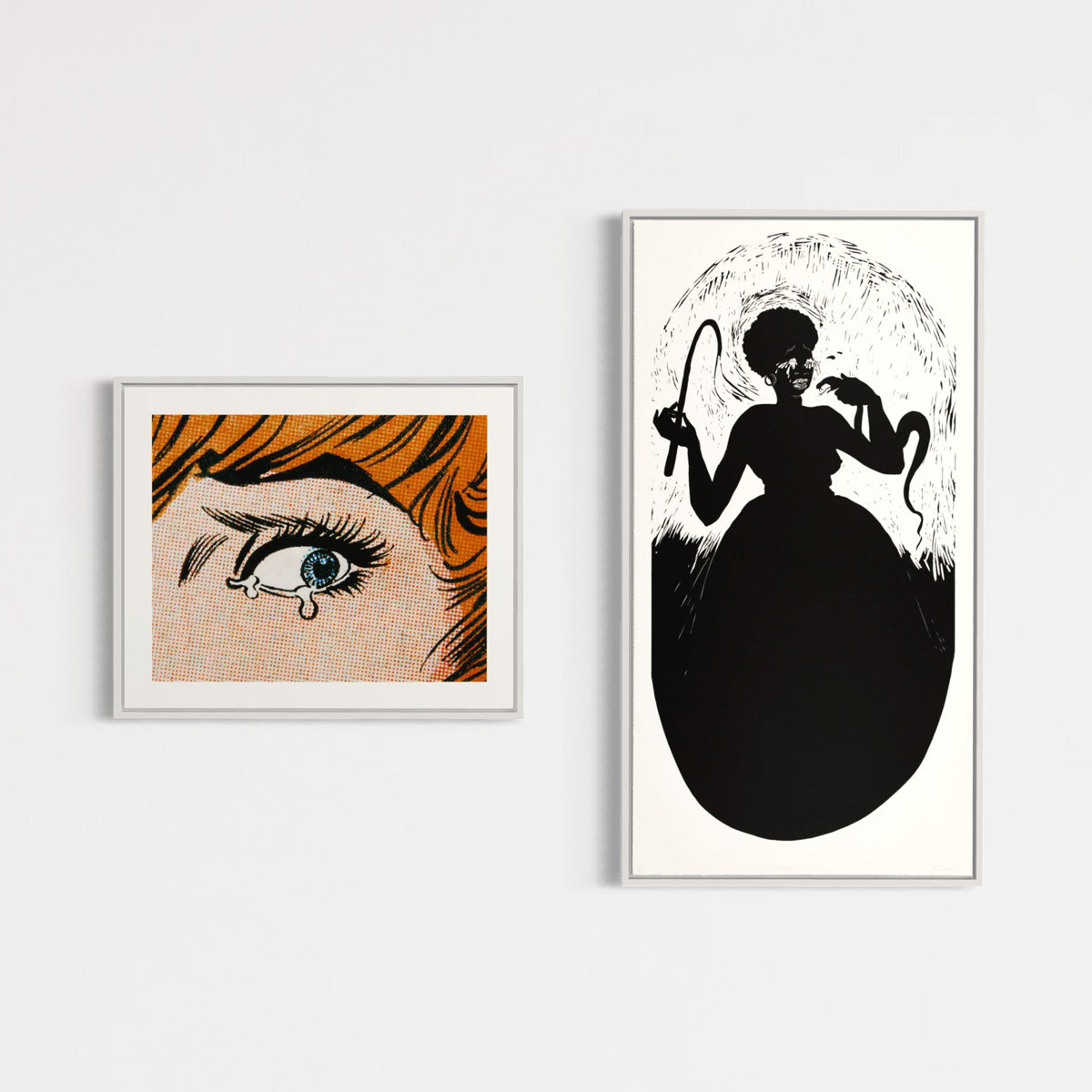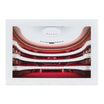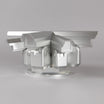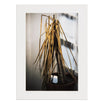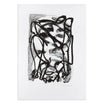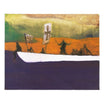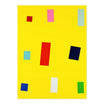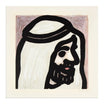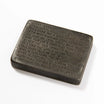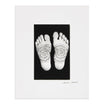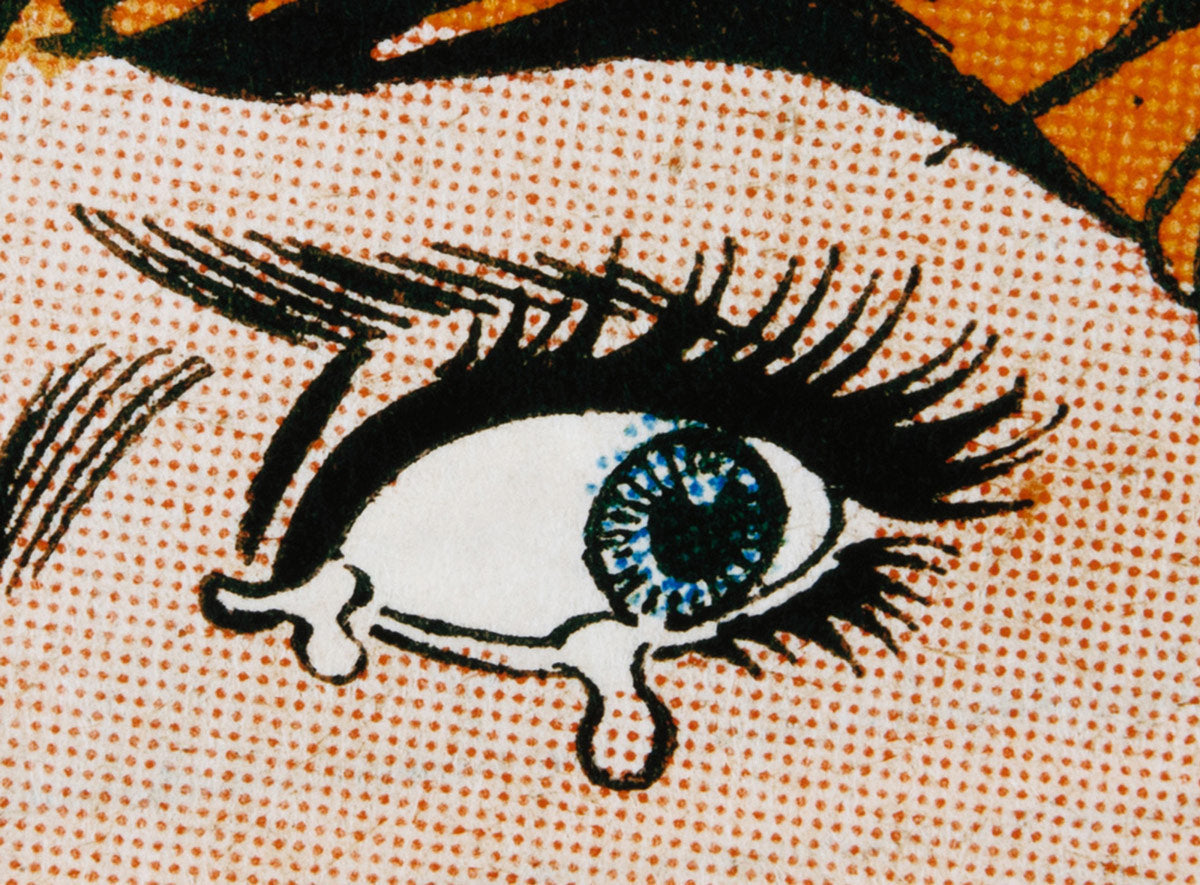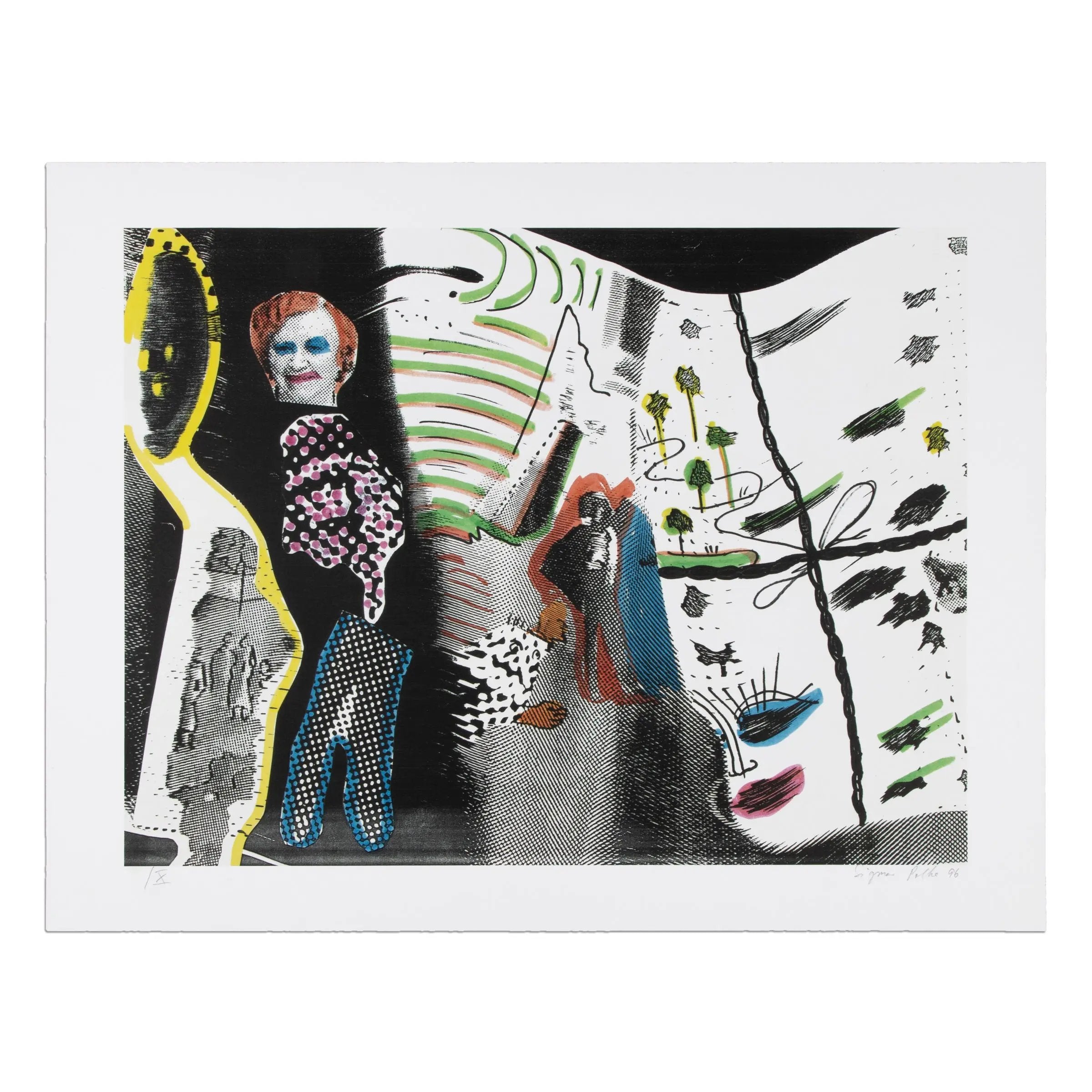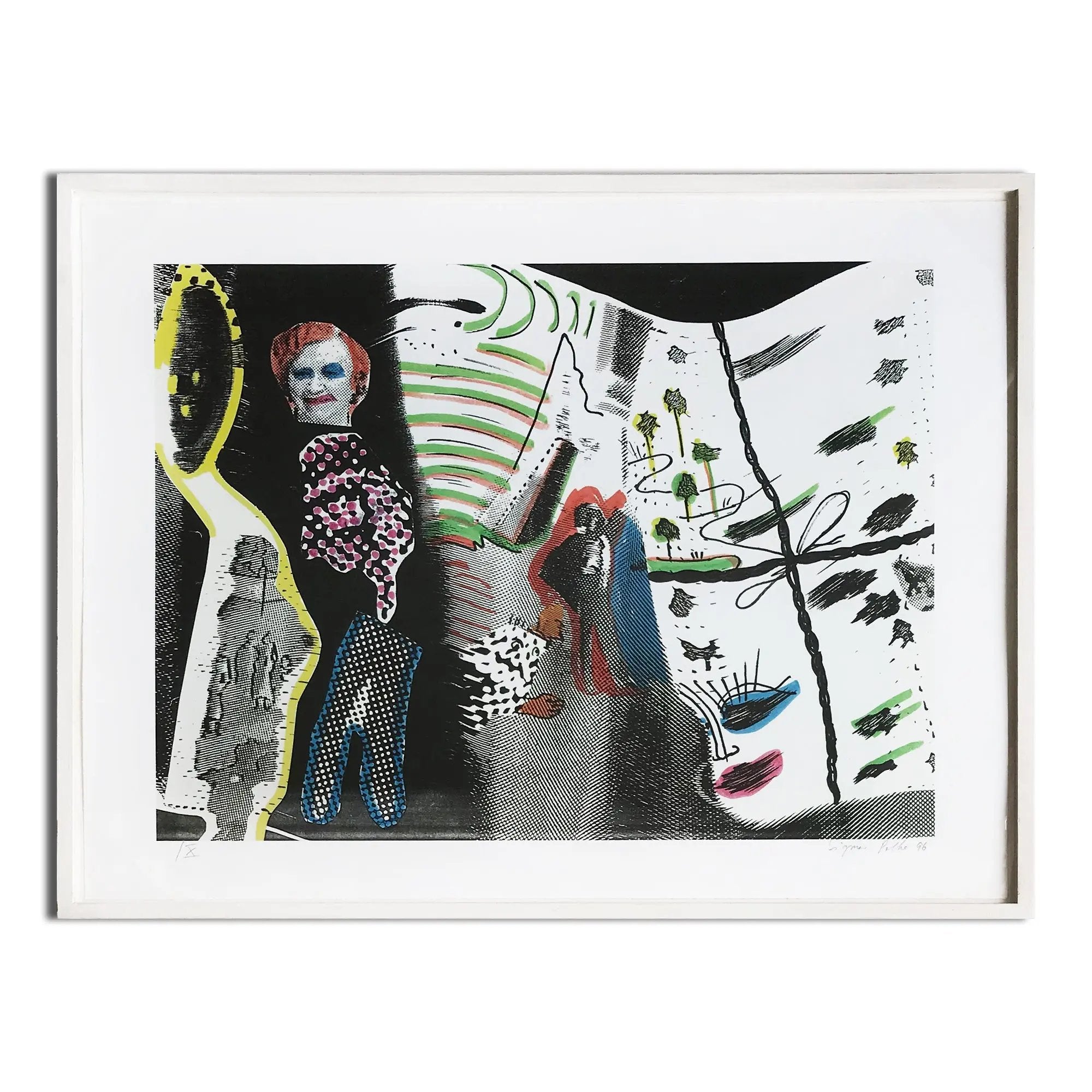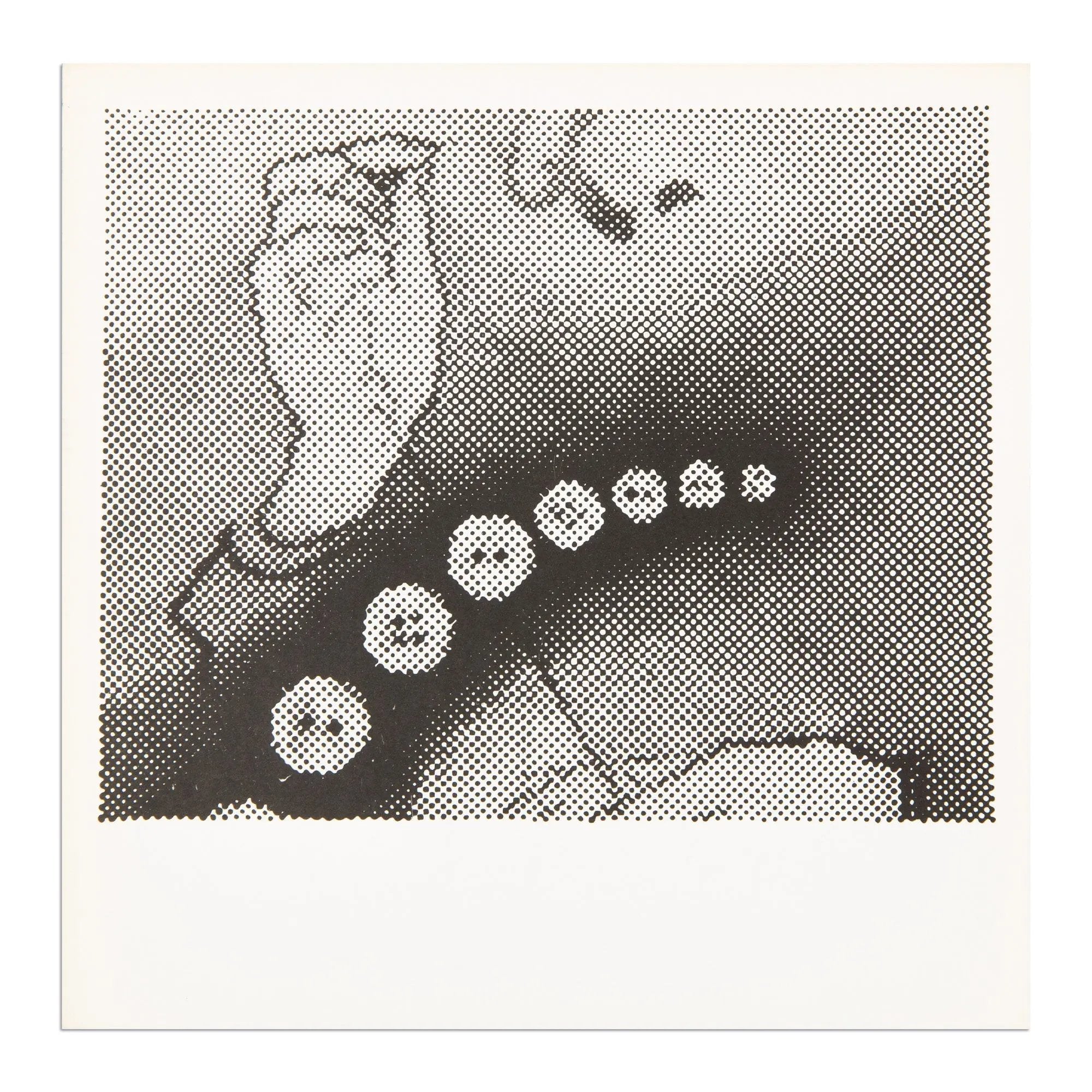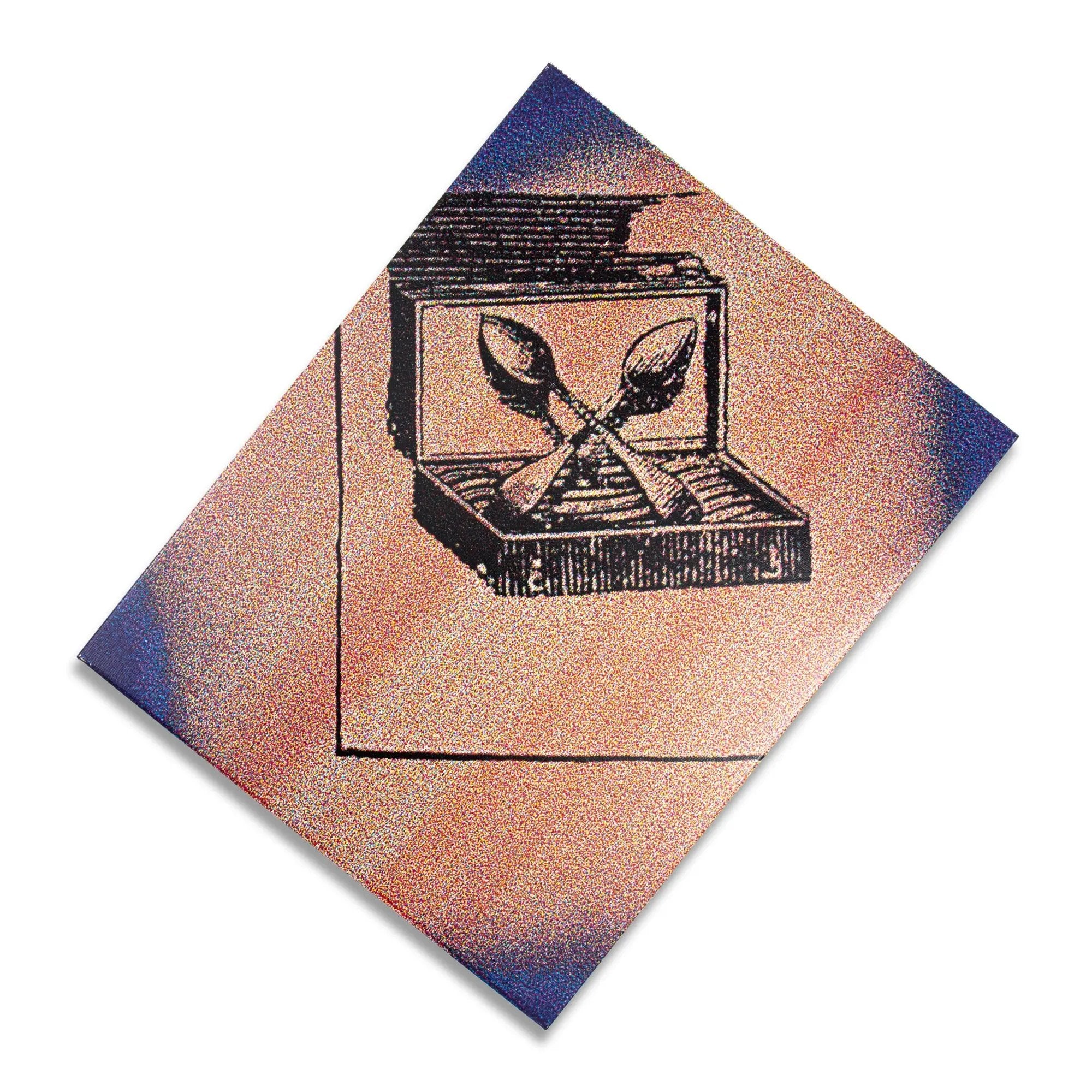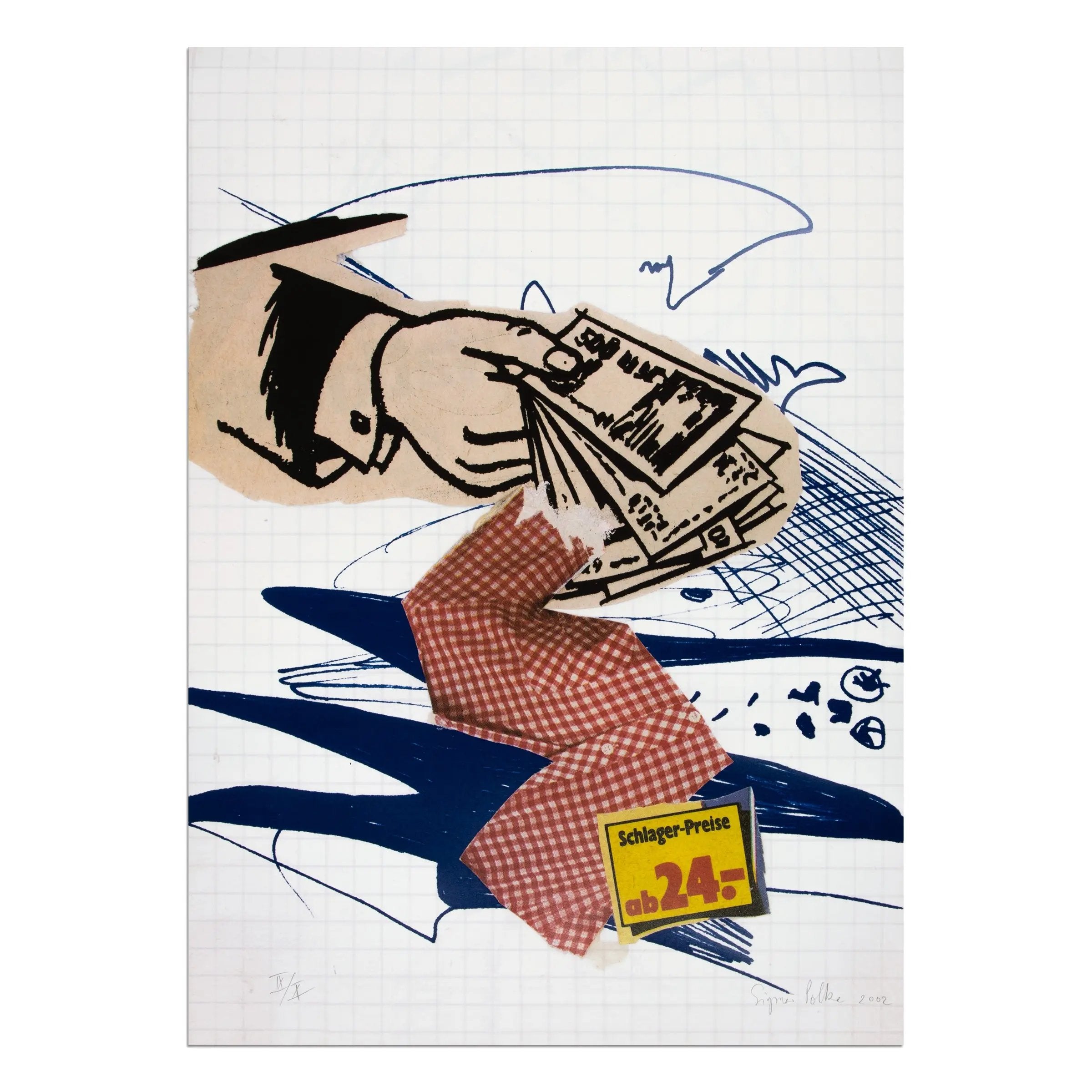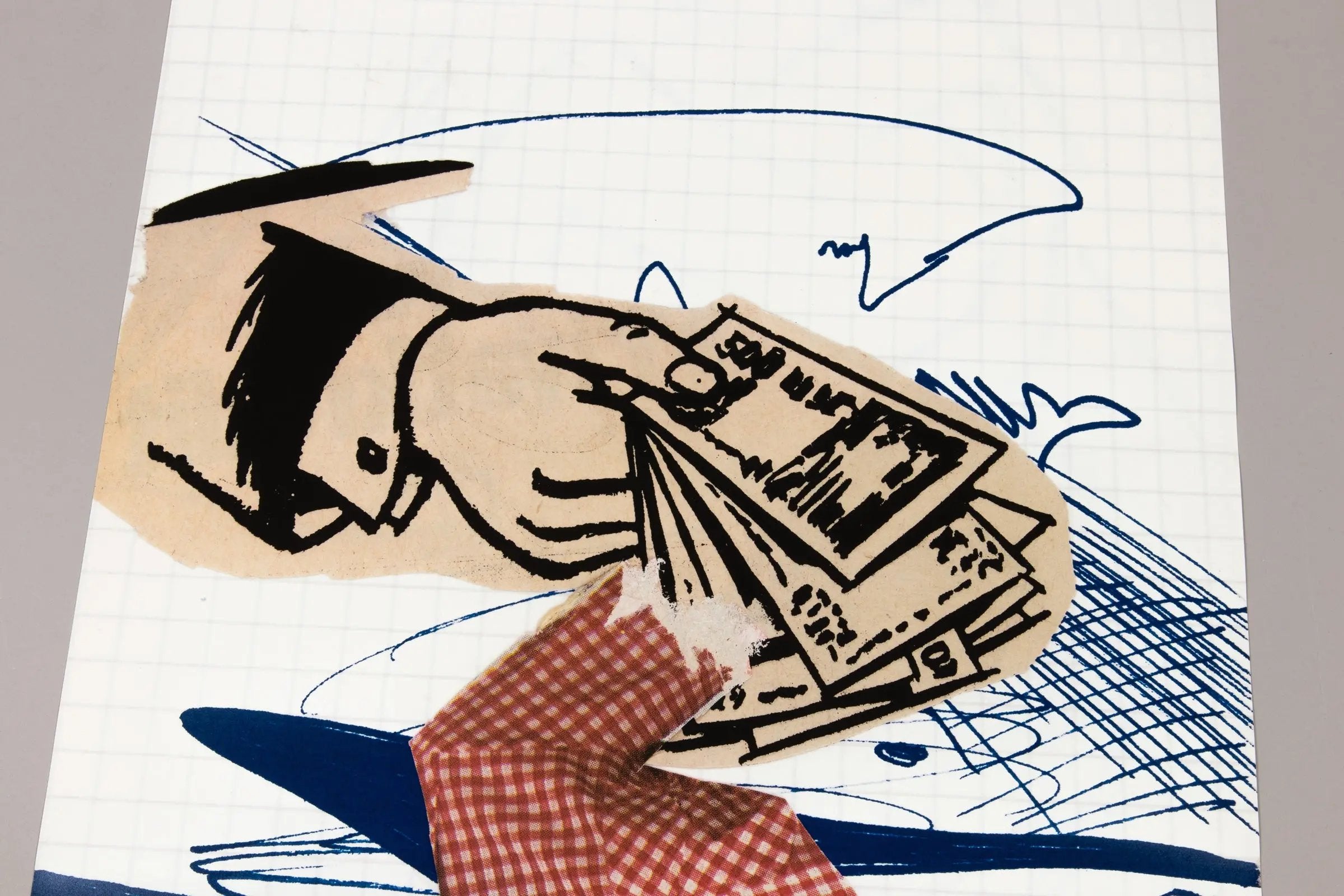Sigmar Polke
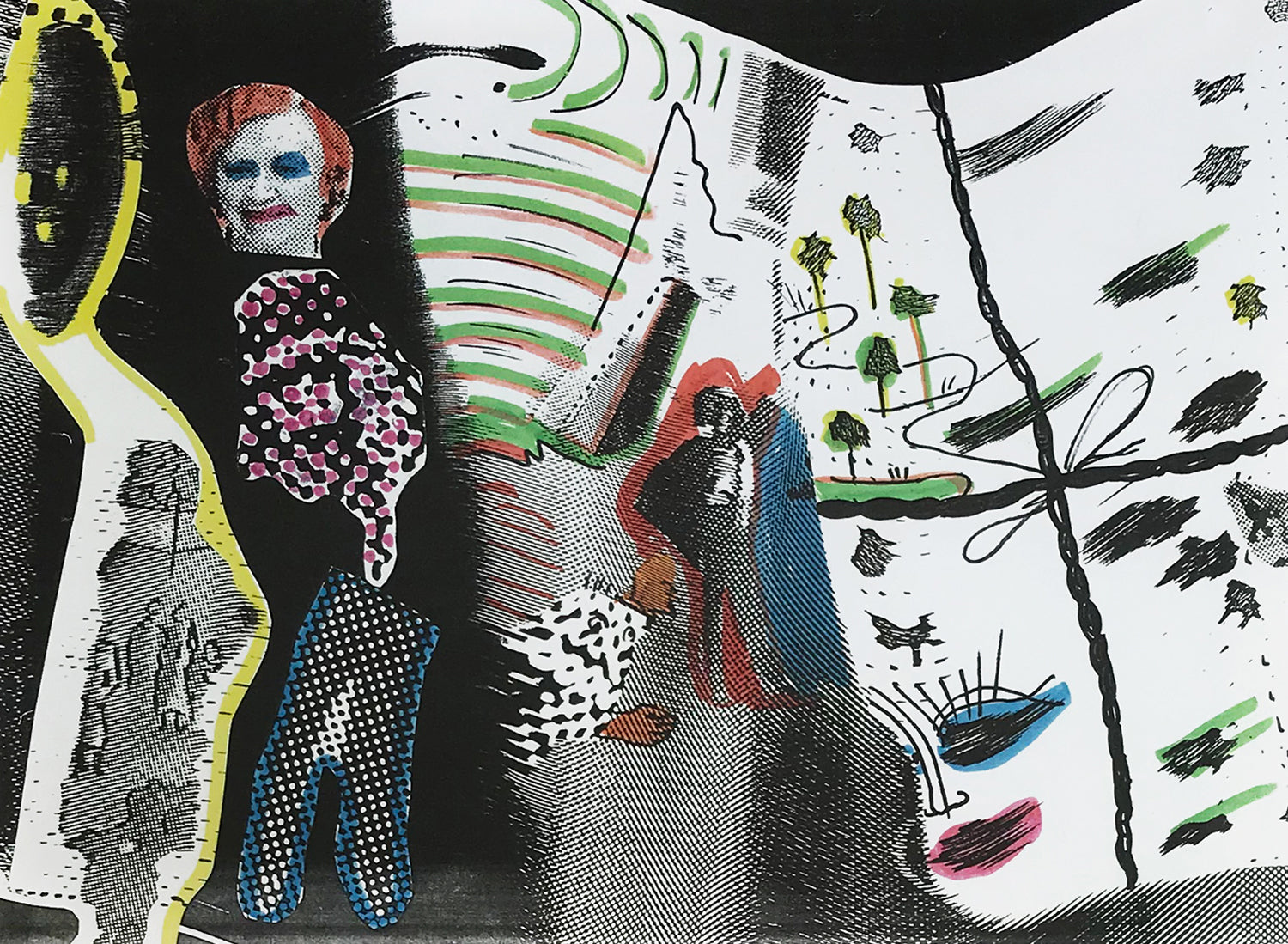
Sigmar Polke
Sigmar Polke‘s limited edition prints stand as a crucial testament to his experimental approach in post-war art, blending a unique mix of media and techniques. These print, available for sale, is emblematic of his influential role in the Capitalist Realism movement, challenging traditional artistic conventions and inviting a deeper understanding of the socio-political landscape of the time.
Filters
4 products
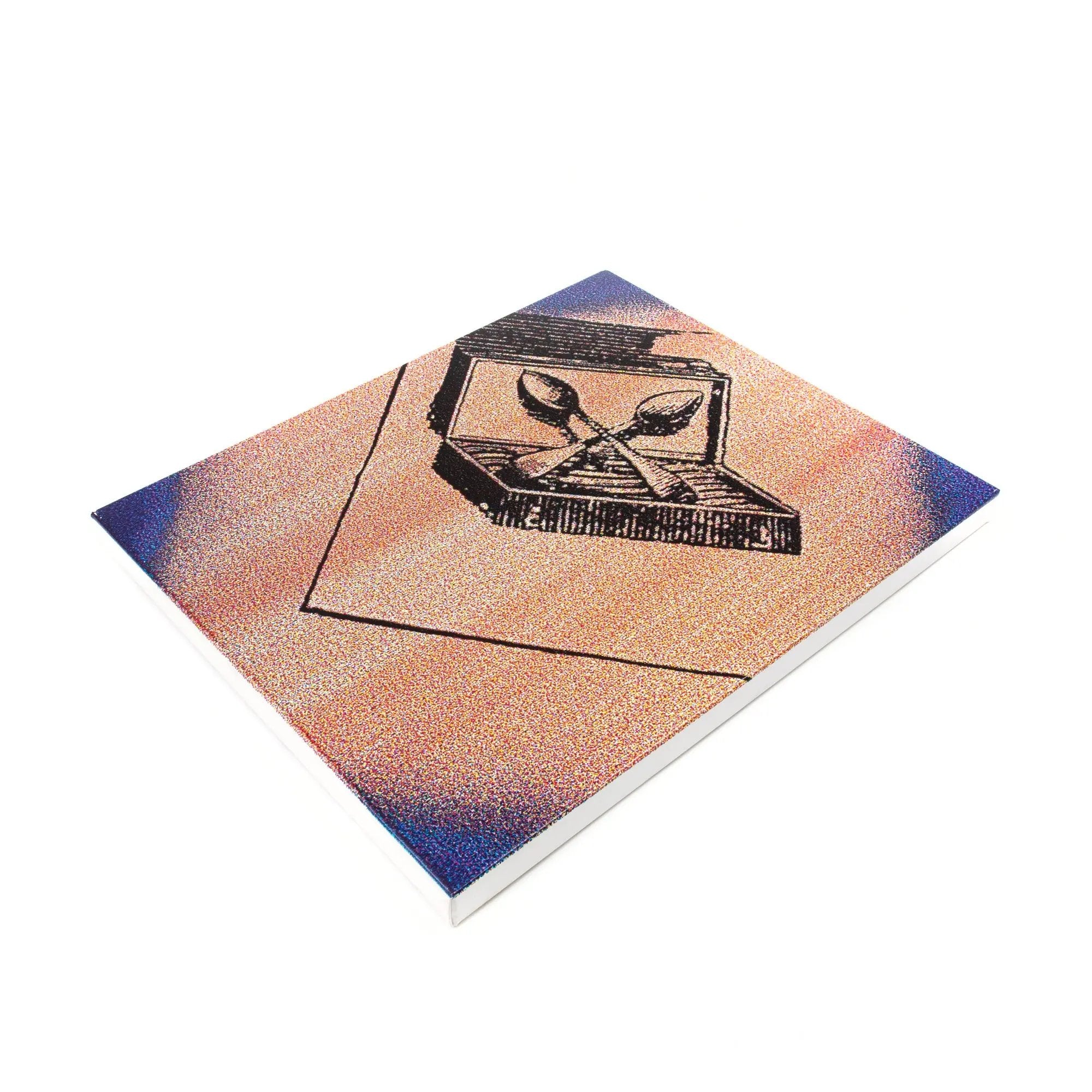
Sigmar Polke (German, 1941–2010), often described as “the alchemist of contemporary art,” is celebrated for his restless experimentation, wit, and groundbreaking manipulation of materials. His studio functioned like a laboratory, where he combined traditional and unconventional processes to create paintings, photographs, and fine art prints that continue to shape the course of postwar art.
In the 1960s, Polke co-founded Capitalist Realism alongside Gerhard Richter and Konrad Lueg. This movement emerged in postwar Germany as a critical response to both American Pop Art and Socialist Realism, satirizing consumerism, mass media, and the bourgeois lifestyle of the time. Polke’s early paintings drew heavily on advertising and popular culture, often executed on nontraditional surfaces such as fabric, wallpaper, or patterned textiles. By appropriating mass-produced motifs and commercial imagery, he blurred the line between high art and everyday culture.
Polke’s innovative use of printing techniques became one of his defining contributions. His raster-dot “grid” paintings, based on enlarged prints from newspapers and magazines, created a mechanical, offset-like aesthetic that simultaneously mimicked and critiqued modern image culture. This interplay of art-historical reference and mass-media imagery placed Polke at the forefront of postmodern artistic discourse.
Throughout his career, Polke remained committed to experimentation with materials and processes—from chemical reactions in painting to photographic manipulations—pioneering new visual languages that challenged perception and convention. His limited edition prints extend this spirit of innovation, making his practice accessible to collectors while preserving the layered complexity of his work.
Polke’s oeuvre stands as a radical exploration of culture, politics, and media, redefining the boundaries of painting and printmaking. His enduring influence can be seen in subsequent generations of artists who continue to draw inspiration from his irreverence, inventiveness, and refusal to conform to a single style.
Auction record: US$27.1m, Sotheby’s, 2015
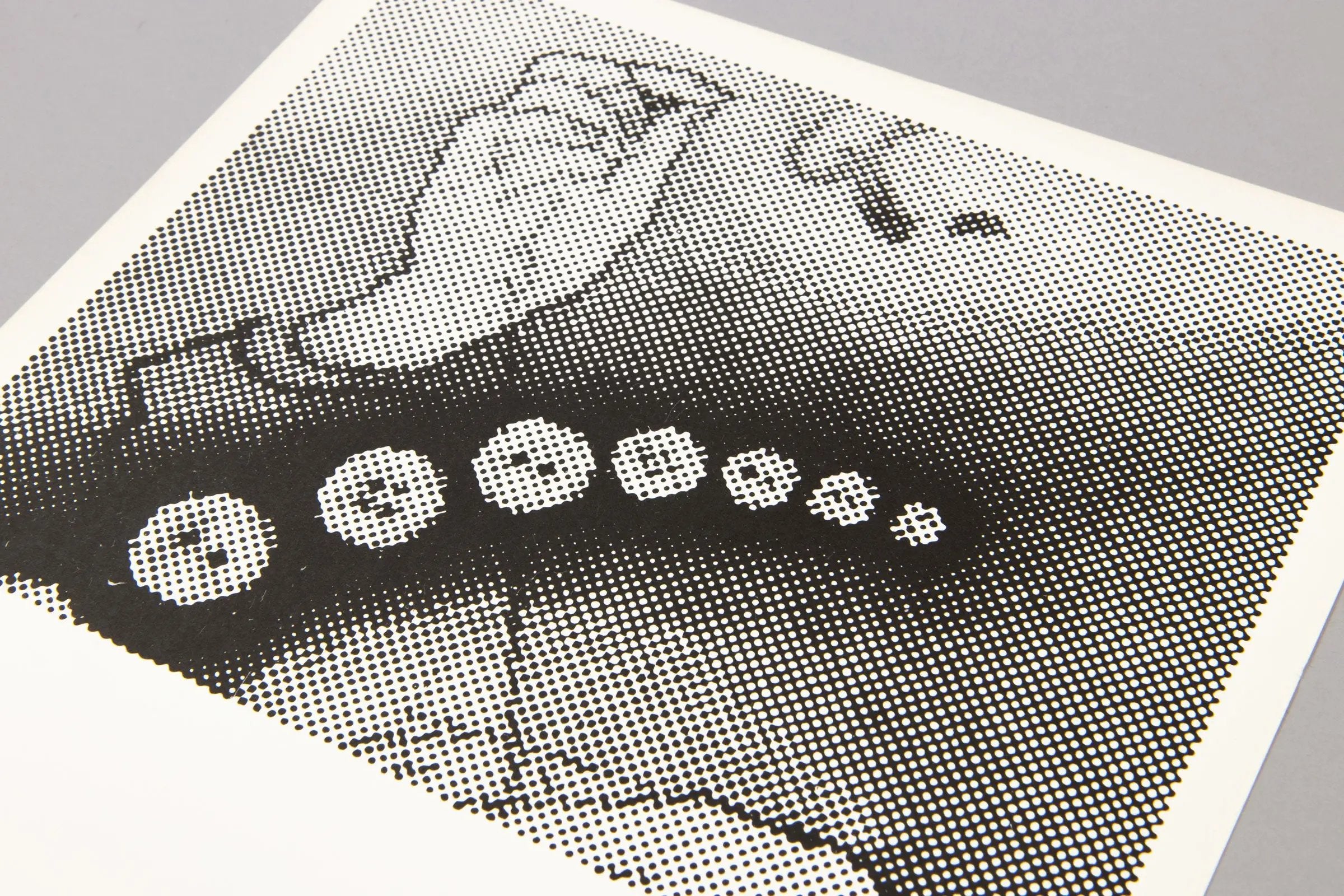
Sigmar Polke’s exhibition history underscores his status as one of the most innovative postwar artists. He participated in numerous international biennales, including documenta, the Bienal de São Paulo, and the Venice Biennale, where he was awarded the Golden Lion for his solo presentation at the West German Pavilion in 1986.
Major retrospectives of his work have been staged at leading institutions worldwide, including the Museum of Modern Art in New York, Tate Modern in London, Museum Ludwig in Cologne, the San Francisco Museum of Modern Art, and the Smithsonian Institution in Washington, DC. Among the most celebrated was Alibis: Sigmar Polke 1963–2010, co-organized by MoMA and Tate Modern in 2014, which offered the most comprehensive overview of his career.
Additional important exhibitions at the Centre Pompidou in Paris, the Stedelijk Museum in Amsterdam, and the Kunsthalle Zürich further affirmed his global impact. Today, his works—including his highly collectible limited edition prints—remain central to major international collections, securing his legacy as an artist who redefined painting, photography, and printmaking in contemporary art.
Sigmar Polke (German, 1941–2010), often described as “the alchemist of contemporary art,” is celebrated for his restless experimentation, wit, and groundbreaking manipulation of materials. His studio functioned like a laboratory, where he combined traditional and unconventional processes to create paintings, photographs, and fine art prints that continue to shape the course of postwar art.
In the 1960s, Polke co-founded Capitalist Realism alongside Gerhard Richter and Konrad Lueg. This movement emerged in postwar Germany as a critical response to both American Pop Art and Socialist Realism, satirizing consumerism, mass media, and the bourgeois lifestyle of the time. Polke’s early paintings drew heavily on advertising and popular culture, often executed on nontraditional surfaces such as fabric, wallpaper, or patterned textiles. By appropriating mass-produced motifs and commercial imagery, he blurred the line between high art and everyday culture.
Polke’s innovative use of printing techniques became one of his defining contributions. His raster-dot “grid” paintings, based on enlarged prints from newspapers and magazines, created a mechanical, offset-like aesthetic that simultaneously mimicked and critiqued modern image culture. This interplay of art-historical reference and mass-media imagery placed Polke at the forefront of postmodern artistic discourse.
Throughout his career, Polke remained committed to experimentation with materials and processes—from chemical reactions in painting to photographic manipulations—pioneering new visual languages that challenged perception and convention. His limited edition prints extend this spirit of innovation, making his practice accessible to collectors while preserving the layered complexity of his work.
Polke’s oeuvre stands as a radical exploration of culture, politics, and media, redefining the boundaries of painting and printmaking. His enduring influence can be seen in subsequent generations of artists who continue to draw inspiration from his irreverence, inventiveness, and refusal to conform to a single style.
Auction record: US$27.1m, Sotheby’s, 2015
Sigmar Polke’s exhibition history underscores his status as one of the most innovative postwar artists. He participated in numerous international biennales, including documenta, the Bienal de São Paulo, and the Venice Biennale, where he was awarded the Golden Lion for his solo presentation at the West German Pavilion in 1986.
Major retrospectives of his work have been staged at leading institutions worldwide, including the Museum of Modern Art in New York, Tate Modern in London, Museum Ludwig in Cologne, the San Francisco Museum of Modern Art, and the Smithsonian Institution in Washington, DC. Among the most celebrated was Alibis: Sigmar Polke 1963–2010, co-organized by MoMA and Tate Modern in 2014, which offered the most comprehensive overview of his career.
Additional important exhibitions at the Centre Pompidou in Paris, the Stedelijk Museum in Amsterdam, and the Kunsthalle Zürich further affirmed his global impact. Today, his works—including his highly collectible limited edition prints—remain central to major international collections, securing his legacy as an artist who redefined painting, photography, and printmaking in contemporary art.




Buy art online
Shop art editions online with transparent pricing, accurate condition reports, and fast dispatch. Designed for international collectors, we make buying limited edition prints and artworks simple, secure, and reliable.

Worldwide shipping
We ship art editions worldwide with full insurance and tracking. Handled only by trusted international carriers, each shipment is securely packaged and typically dispatched within 5 days.

Professional packaging
Every artwork is packaged to the highest professional standards. Using solid multi-layer cardboard and protective materials, we ensure your art editions arrive safely and in excellent condition.

Secure payment
Buy with confidence using secure, encrypted payments backed by advanced fraud protection. Every transaction is processed with trusted technology, ensuring a smooth and worry-free checkout for collectors worldwide.

